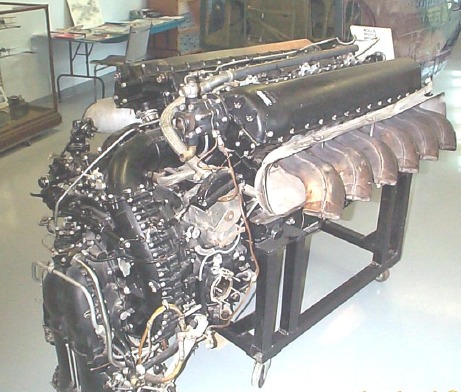 Museum
Museum  |
Bomber Command
|
Aircrew Chronicles
|
Aircrew Losses
|
Nose Art
|
BCATP
|
Lancaster
|
Media
|
Bomber Command
|
Aircrew Chronicles
|
Aircrew Losses
|
Nose Art
|
BCATP
|
Lancaster
|
Media
 Museum
Museum  |
Bomber Command
|
Aircrew Chronicles
|
Aircrew Losses
|
Nose Art
|
BCATP
|
Lancaster
|
Media
|
Bomber Command
|
Aircrew Chronicles
|
Aircrew Losses
|
Nose Art
|
BCATP
|
Lancaster
|
Media
Bomber Command Museum Chronicles
Everyone knows the Spitfire story, how it was designed by Joseph Mitchell, based on some of the knowledge from building the Supermarine Schneider Trophy seaplane racers. However it is not acknowledged that without the Merlin engine the Spitfire would not have been the exceptional aircraft that it was. In the following pragraphs some interesting facts about the Merlin will be revealed. It is presumed that the reader will be familiar with basic technical details, e.g., twelve cylinder "V" design, liquid cooled, supercharger, etc.
|
 |
The Battle of Britain was a pivot point in WWII and the history of the world. The Merlin engine was an important factor in the success of the RAF. Merlin design and development was a private venture by Rolls Royce. No government funding was provided and it was called the PV-12 (Private Venture). The engine was first flown on April 12, 1935, in a Hawker Hart biplane.
By strange chance, both the ME109 and HE113 fighters in Gremany were first flown with a Rolls Royce engine, the Kestral, as the Dailmer-Benz engine was not yet available. As a further note -- the ME109s featured in the post-war Battle of Britain film were Spanish ME109s fitted with Merlin engines.
Merlins, in many different MKs, were fitted to Spitfires, Hurricanes, Wellingtons, Defiants, Lancasters, Halifaxes, Mustangs, and Mosquitos. When the Allison-engined Mustang come to England it was very fast at low altitude (350 mph), but pretty useless above 10,000 feet. However when fitted with the Merlin the speed increased to 450 mph and it had excellent performance at altitude. The official speed record for a piston engine powered aircraft is held by a Mustang (499.048 mph), powered by a Griffon engine which was a later development of the Merlin.
Churchill considered the Merlin so important that early in the war he secretly ordered a set of drawings sent to America in case England was overrun. In 1940 production was arranged in the U.S.A. where they were made by the Packard plant in Detroit. Henry Ford turned down the chance to make the world's greatest engine because he thought Britain would lose the war.
All aircrew who have flown in Merlin-engined aircraft will pay tribute to the performance of these engines. The post-war North Star was noisy but at least one knew that the engines were doing their job! Lord Trenchard, when reviewing the Battle of Britain, gave full credit to the Merlin engine as one of the chief factors in the RAF victory.
But I think the greatest tribute of all is in the Derby at the Rolls Royce factory. There in the front hall is a stained-glass window featuring a young pilot as a memorial to all the pilots of Hurricanes and Spitfires who defeated the Luftwaffe. The inscription reads: